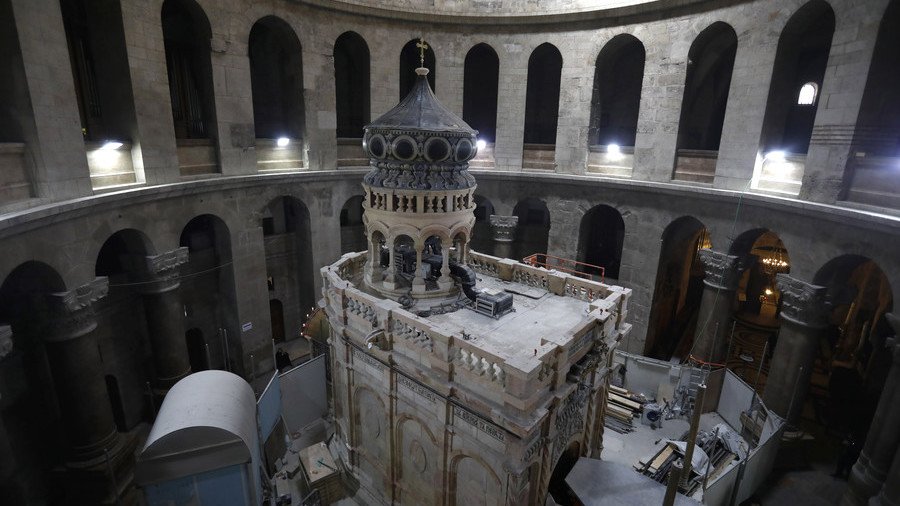Dating tests on ‘Christ’s tomb’ confirm origins of ancient shrine

Scientists conducting tests on a tomb purported to be the burial place of Jesus Christ have confirmed a vital part of the site’s history.
Researchers studying Jerusalem's Church of the Holy Sepulchre made the discovery after taking mortar samples from the original limestone surface of the burial bed inside the tomb. They also tested the marble slab laid over it.
READ MORE: Rock of ages: Man-made 10,000yo monolith found off Italian coast
The results, as reported by National Geographic, reveal that the marble dates back to around 345 AD, the era of Constantine, the first Christian Roman emperor. Antonia Moropoulou, chief scientific coordinator of the restoration works for the National Technical University of Athens (NTUA), told AFP the results are consistent with the traditional belief that the Romans enshrined the tomb in a new church, known as the Edicule, in 326 AD.
"This is a very important finding because it confirms that it was, as historically evidenced, Constantine the Great responsible for cladding bedrock of the tomb of Christ with the marble slabs in the Edicule," said Moropoulou.
Sections of Western Wall, Roman theater unseen for 1,700yrs uncovered in Jerusalem (PHOTOS) https://t.co/GErT1l5lGG
— RT (@RT_com) October 17, 2017
The church housing the Edicule has endured a rather turbulent history. It has been periodically attacked by successive waves of invaders including Persians and the Crusaders. Razed and rebuilt in the second century, and then again in 1009 AD, dating tests on the church’s walls have returned varied results. Tests on the plaster of the cave purported to hold the burial tomb of Christ have been dated between 335 AD and 1570 AD.
READ MORE: Jesus’ tomb reopened in Jerusalem amid fears of ‘catastrophic’ collapse (PHOTOS)
It’s not known if Jesus was buried at the shrine, an event thought to have occurred around 33 AD. The mortar samples were taken during extensive archaeological and restoration works to the Edicule by the NTUA last year.
The Greek Orthodox, Armenian and Roman Catholic churches, the joint custodians of the site, contributed more than $3 million for the project, with King Abdullah of Jordan also reported to have made a contribution. It is the first time in more than two centuries that the Edicule and the cave have received any maintenance work, following repeated warnings from archeologists that a failure to restore the site would lead to its catastrophic collapse.












